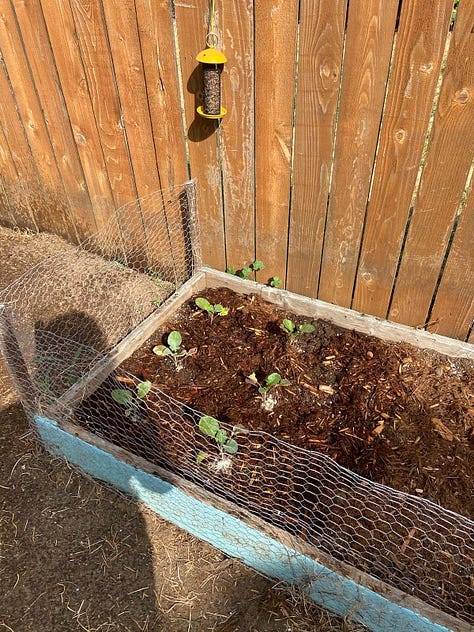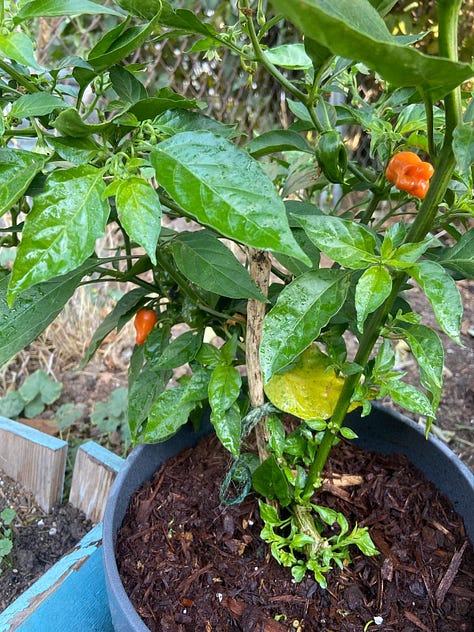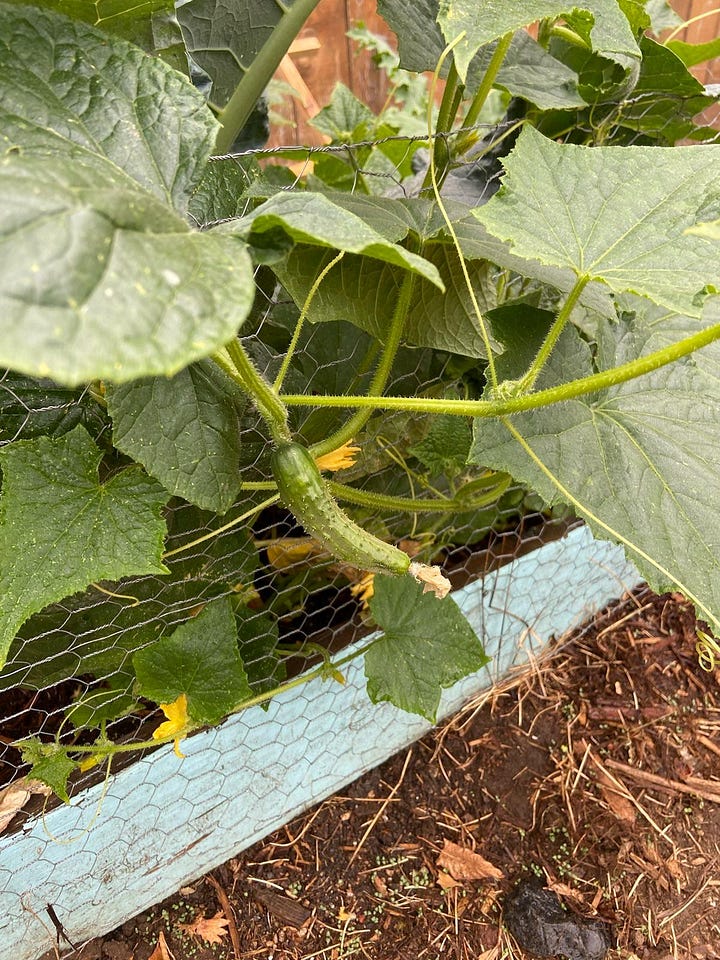3 Generational Signs That a Solarpunk Moment is Coming
Can we achieve technological progress while also improving our natural environment? Solarpunk says yes.
Everything in sci-fi is dystopian, or at least it feels that way. I get it. Nobody is investing money for futuristic stories where everything is great. Today’s sci-fi tends to keep things dark and gritty, save for the few optimistic outliers like Star Trek or For All Mankind. Unfortunately, we as a society have let the profit-seeking decisions of book publishers and movie studios warp our perception of what the future could be.
We should balance the nihilistic views that sci-fi often has about the future, yet this is often difficult because the world we live in can indeed feel dystopian. Consciously, we can do anything once we realize that sci-fi is up to the imagination. In a time when it’s hard to feel positive about the world’s trajectory, we should pivot in ways that showcase a brighter future.
Enter the Solarpunk movement, a relatively new subculture that offers up a more sustainable, pro-technology future. It’s so new, in fact, that I don’t think it’s worth discussing its definition. The important thing to realize is that a movement like this can become anything, especially as it currently sits in its infancy. It doesn’t even need to be called Solarpunk.
Millennials and Gen Z have a chance to define this movement, even if it's simply painting a more optimistic view of the future for our children. Here are some reasons why these two generations are in a perfect position to do just that.
The generations of the Internet
None of this gets off the ground without the Internet. In general, it has been a progressive and disruptive force that has allowed many different subcultures to thrive. Growing up with the Internet has allowed us to understand that the world’s knowledge is at our fingertips, alongside many different communities that were previously isolated. It has also shown us how more sustainable cultures are able to thrive.
Online creators have also made a point to show that factory farming is bad and growing your own food can actually be easy and affordable. The Internet has helped bring indigenous knowledge back to the forefront for solving current environmental problems, showing how they were obviously better stewards of nature than us. I grew up in Hawaii, and luckily had the chance to learn about ahupua‘a systems, which cultivate natural resources from mountains to the sea.
Solarpunk ideals say that technology can be a path to a simpler life, not just a consumption-based rat race. If enough people are convinced of this, the Internet will also be how this way of life proliferates. With unlimited access to knowledge related to engineering, DIY, botany and more, we have empowered future generations to become more self-sufficient and resilient in a truly decentralized way.
Related Viewing: Crime Pays But Botany Doesn’t has been a recent YouTube obsession. His humor, bluntness and knowledge of botany is unmatched. Enjoy dozens of videos exploring various habitats that show you the incredibly diversity of nature.
If things continue to get worse from a climate perspective, the Internet is where we will go to make sense of it and dream up solutions based on what we have. These effects can compound further when you think about the growth of Internet of Things (IoT), robotics and AI. These rising technologies can save us time, but what we do with that time is still up to be determined. The Solarpunk mindset can help people avoid the consumerist side of technology in favor of a more beneficial one.
The generations of remote work…and houseplants
Houseplants clearly had their moment during the pandemic. The Guardian gets into a few reasons why, but it’s a subtle sign of the Solarpunk ideas to come. Some millennials that started with pothos plants have turned into urban farmers, while others have seen most of their plants shrivel and die. Our household was a mixed bag. I still have a Monstera and a Hoya that are doing well. Nevertheless, more young people have taken a hand in plant cultivation than any in recent history. This is positive momentum that we can build on.
Remote work and schooling also allowed people to nest like never before. Stuck in our homes due to the pandemic, we picked up hobbies, purchased new furniture and otherwise dedicated ourselves to the quality of our home lives. Some young families experiencing the benefits of remote work even saw this as a chance to live in more rural areas, where they could lower their cost of living. Working a tech-based 9-5 on a few acres where you can raise chickens and cultivate a garden is exactly the Solarpunk origin story that has become more common in recent years.
This houseplant craze took place while those in the farm-to-table movement discovered the potential of regenerative agriculture. While we don’t know if this form of agriculture can scale, it presents something massively different from the current model of monocropping and factory farming. It does so while not asking people to become vegan, which makes it even more compelling, personally. These farmers are demanding high prices for their organic fare from chefs and families at urban markets. Both habits at home and commercial ones show how millennials and Gen Z are ready to spend their money and time on their nutritional health and surroundings.
The generations of climate consciousness
This last one is probably obvious, but today’s youth have an incredibly high awareness of the climate issues that we face. Droughts, wildfires, rising sea levels and extreme weather events are particularly well-suited to social media feeds and their preferences for fear- and rage-inducing content.
These situations have gone particularly viral because it’s something that previous generations had largely been able to ignore or downplay. President Nixon of all people, still saw it important to create the Environmental Protection Agency. Is it fair for young people that our political situation today has lost all such levels of bipartisan reason? No, it’s not.
Younger generations, however, have responded with new levels of political activation and habits that reduce their consumption and waste. Protests are common, and politicians are listening, but that’s not all. From recycling bins in every city to the rise of veganism, there are signs everywhere that young people don’t want to further strain the earth’s resources. This speaks to a sincere desire to find symbiosis with our environment. Solarpunk advances this further, but the ethos has already taken root.
Cultural signs to watch for
If a Solarpunk movement is to arrive, it will do so through culture. Culture is dictated by creative minds who are inspired by what they see around them. If enough people can cultivate greener surroundings, that often creates a virtuous loop. Perhaps our first great Solarpunk novelist or screenwriter is among us, walking through a neighborhood filled with compost bins, urban gardens, houseplants and parks. Or maybe, they live in Singapore, because that is the most solarpunk city that exists.
In the system we find ourselves in, purchasing power is power. As younger generations gain a larger slice of the pie, Solarpunk fiction may not be the only green shoots that sprout up. Brands have also begun to notice the precursors I’ve outlined above. Just take a look at this ad for the Kia Sportage X Pro!
Making my own biases clear
I’m leaning into this subculture, because I love both nature and technology. I often think of technology’s development as an organism that’s not much different to what we often see in nature. More importantly, I want my kids to grow up in a world where these two aspects of our lives are in better balance. I’ll close with some pictures from my first garden, which was hastily assembled last summer. I’m off to a better start this year, and I hope to have a better harvest to share soon.









